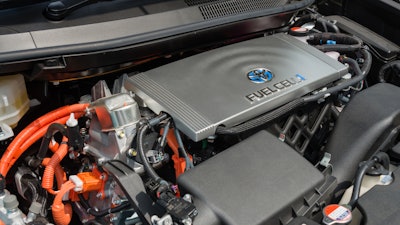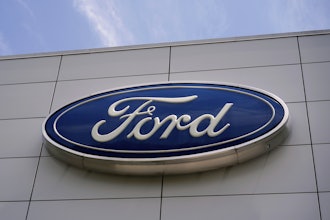
The concept of a fuel cell vehicle, with an engine powered by compressed hydrogen, sounded very much like science fiction. Looking to replace my 17-year-old gas-guzzling SUV, I came across an advertisement for hydrogen fuel cell cars.
I was surprised to find that I could lease a hydrogen-powered automobile for about the same monthly payment as a regular vehicle. And so the questions began: What is a fuel cell-powered vehicle? Is this a mature technology? How safe is it? I was most curious about how future demand for hydrogen might be satisfied by a sufficiently dense network of special pump stations.
I remember the chemistry lesson in high school when our teacher jolted us in our seats with a stunning hydrogen/oxygen-mix explosion. What followed was a lecture on the unsafe nature of hydrogen, illustrated by the horrific Hindenburg airship disaster. Our physics teacher, on the other hand, gloated about the prospect of using fuel cells on a large scale. After all, the technology converts compressed hydrogen into electricity to run engines without combustion or emissions.
Over the past 30-plus years, this vision has moved from the lab to reality. Hydrogen-powered cars are one of the hottest developments offered by market leaders such as Hyundai, Toyota, Mercedes-Benz, and Chevrolet.
The Technology
A fuel cell-powered car is like any other electric vehicle but uses hydrogen instead of a large, heavy battery for energy. These innovative cars are considered much safer than regular gasoline-powered automobiles and, at a hydrogen gas station, can be refueled as quickly as any of them. The reach is also equivalent: a full tank of hydrogen lasts for about 300 miles. Rather than noxious, poisonous exhaust, a fuel cell vehicle emits only water vapor.
Fuel Availability
With all these advantages, why don't we see a large number of these vehicles on the streets? The main problem is the availability of refueling stations. Today, there are about as many hydrogen stations available in the United States as there were gasoline stations around 120 years ago, when kerosene sales at grocery stores gave way to the first gas pumps.
Currently, only California offers publicly available hydrogen pumps at a useful scale. In contrast to the approximately 4,000 electric charging stations in the state, there are fewer than 40 hydrogen pumps. A close look at the map below shows the density differences among the station types and emphasizes how fuel cell customers must make up in enthusiasm what is lacking in convenience.
The State of California is working hard on expanding from 33 public stations today to 100 stations in 2018. The government alone will not be able to guarantee appropriate coverage; private initiative is needed to accelerate the growth.
The $3 million needed for setting up a hydrogen station is a 50 percent premium over the $2 million for owning a regular gas station. As in the old days when grocery stores and pharmacies sold gasoline to attract customers, the additional investment may make sense for large shopping center operators or other magnet businesses that are seeking to lure environmentally oriented hydrogen-hungry customers.
Future Potential
Are we going to see a substantial consumer base for hydrogen-powered vehicles? There is a high likelihood that this technology will catch on. Advantages to new vehicle owners include acting on a sense of environmental responsibility, quick refueling options (versus charging an electric car overnight), low engine maintenance costs, and tax breaks.
On the downside, there may be some lag time before the extensive availability of hydrogen produced in an environmentally friendly way. Currently, hydrogen is mostly extracted from natural gas; this process increases the CO2 footprint and makes the life cycle emissions only slightly better than a hybrid vehicle and yet not as green as battery-operated electric vehicles.
Most importantly, the potential success for this new technology depends on hydrogen fuel station coverage. In California, approximately 400 stations will be needed in order to allow 30 million citizens (about 80 percent of the population) to access a station within a 10-minute drive.
Given the substantial up-front cost, where should the hydrogen stations be located to provide optimal coverage and attract adoption by vehicle owners? Below, a geographic analysis using demographic data and geographic information system (GIS) technology shows potential sweet spots for future fueling stations. Private investors may initially focus on areas with higher income (shown in dark purple) and avoid areas that are already covered by existing or planned fueling stations (in green and orange).
Based on the geographic analysis, there are several good candidate locations for private hydrogen stations. For example, the Huntington Beach area is affluent and not covered by the California fuel station plan. Who is going to be first to invest in the growing need for environmentally friendly technologies?
After completing my research on how to procure a particular supermodern hydrogen car, I was told that my time had not yet come. Unfortunately, the manufacturer's website informed me that the new model will not be available in my area. For now, my fuel cell dreams have been deflated, but I'm optimistically predicting that we will have sufficient coverage in the next 5 to 10 years. Of course, if fuel station expansion takes too long, in 20 years' time I might find myself shopping for not a shiny new car but a comfortable, fuel cell-powered golf cart or, worse, scooter.























